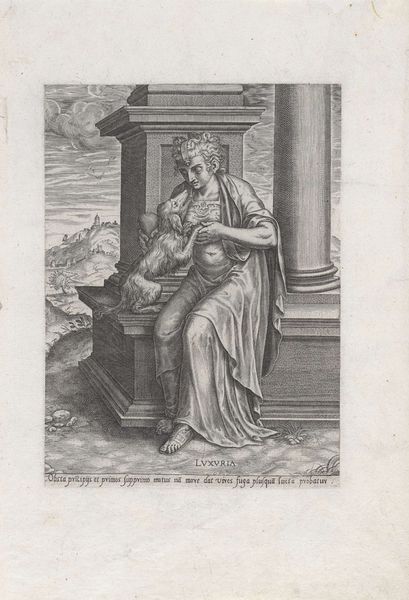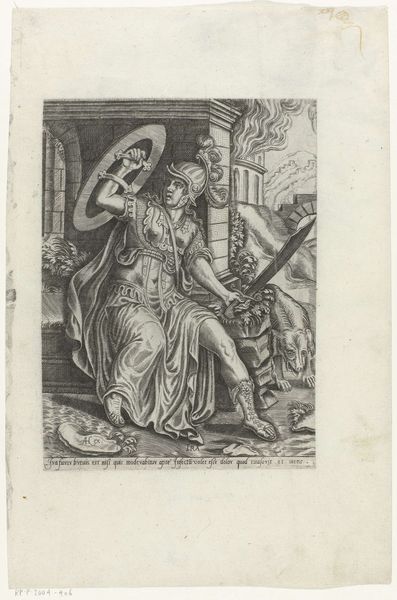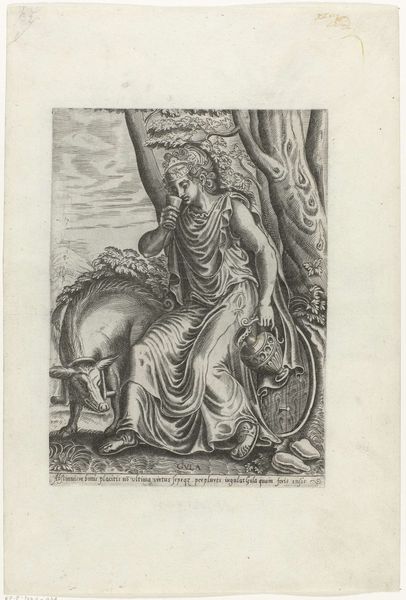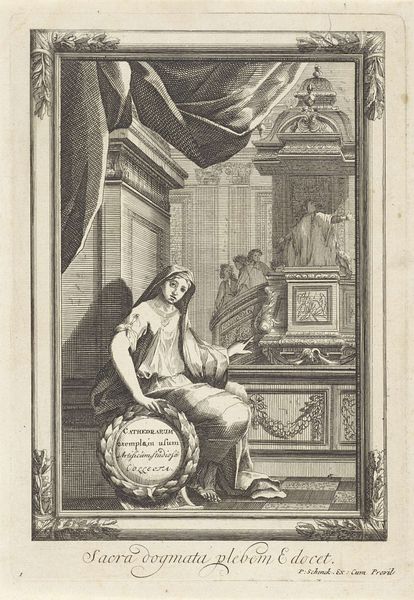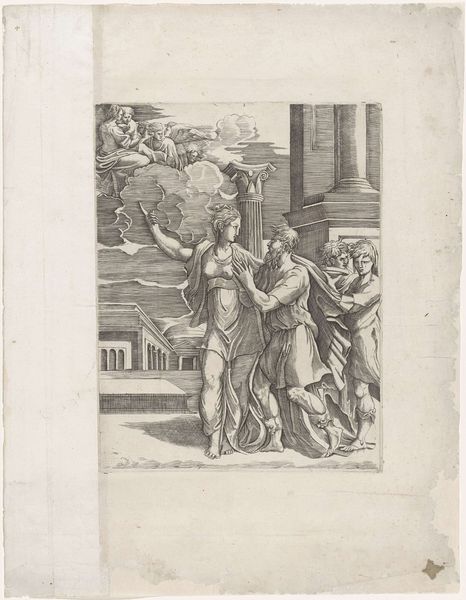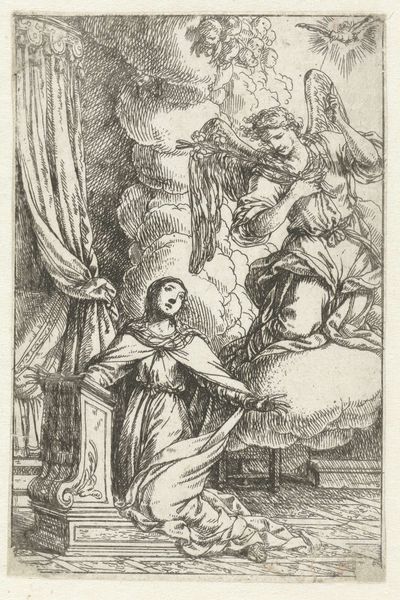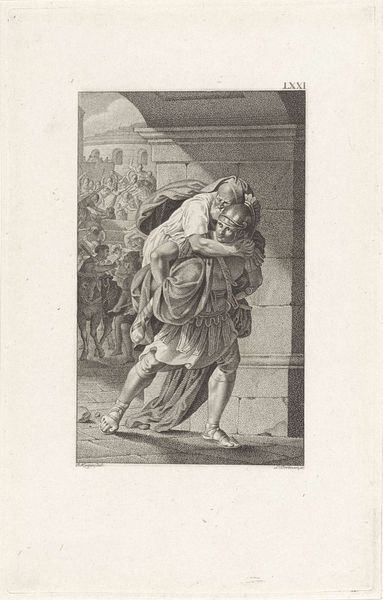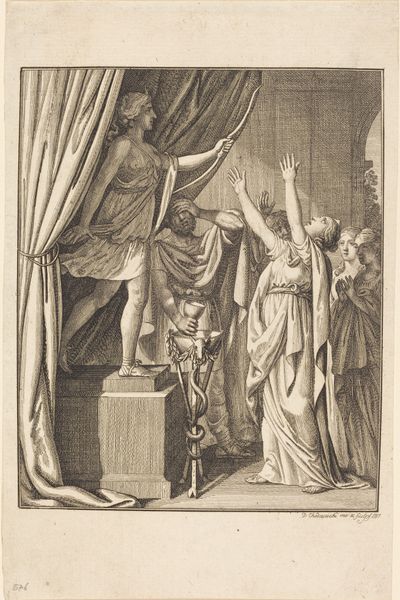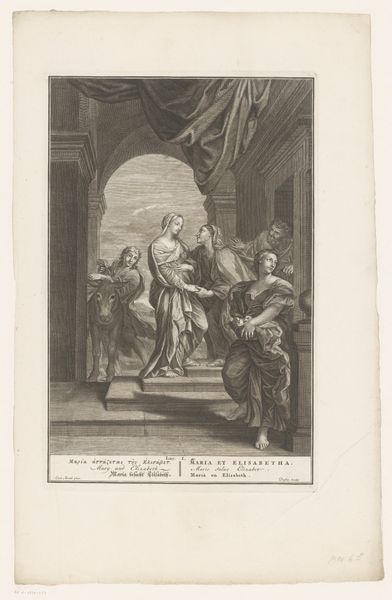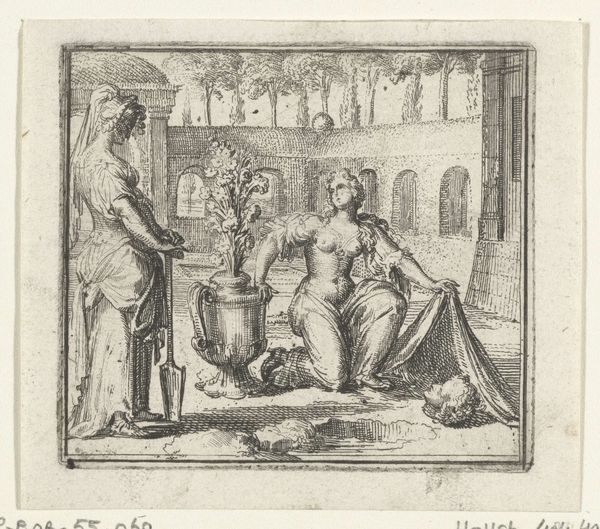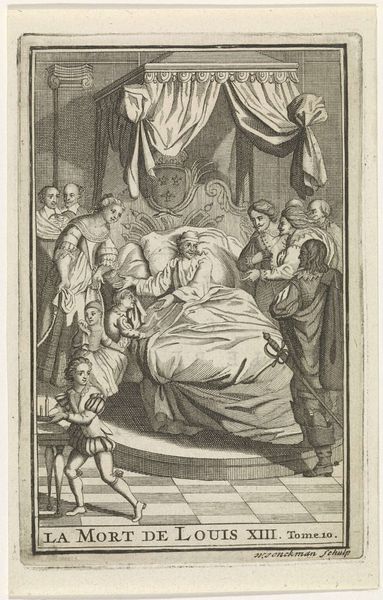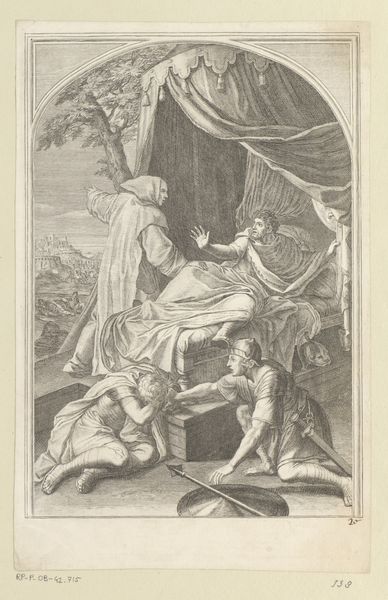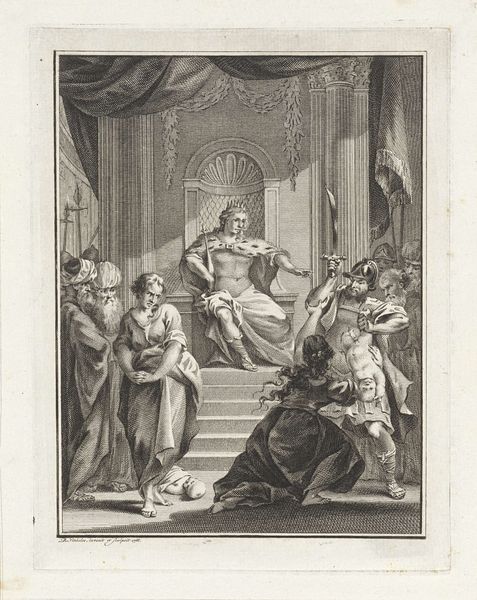
engraving
#
portrait
#
allegory
#
mannerism
#
engraving
Dimensions: height 219 mm, width 161 mm
Copyright: Rijks Museum: Open Domain
Editor: This engraving, titled "Luiheid," dating back to 1575, presents a rather languid scene. The draping of the fabric is so pronounced, and yet the figure within seems completely still. What can you tell me about it? Curator: The power here lies in the interplay between the figure's stillness and the dynamic lines that constitute the composition. Notice the strong verticals of the column contrasting with the receding horizontal lines of the seascape in the background. And the draped fabrics. This visual tension effectively embodies the concept of "Luiheid" - or "Sloth". Editor: That's interesting. I hadn't considered how the architectural forms played a role, focusing so much on the figure. Is there more we can infer by those details? Curator: Yes, observe the sharp lines of the architecture juxtaposed with the soft, almost shapeless form of the figure. This intentional disjunction reveals a state of internal discord and the inherent resistance against a structured world. Editor: So the contrast between the sharp, intentional architectural elements and the soft human figure underscores the artwork's meaning. Thank you. Curator: The manipulation of lines, shapes and contrasting forms invites contemplation beyond just surface appearance. This is where art transcends mere representation and becomes an exercise in philosophical inquiry, as demonstrated so expertly. Editor: It's interesting to view a portrait through a more structural lens. I guess I hadn't realised how informative engravings of the period could be. Curator: Exactly! Appreciating that the form itself communicates something adds greatly to one's comprehension of an engraving such as "Luiheid".
Comments
No comments
Be the first to comment and join the conversation on the ultimate creative platform.
